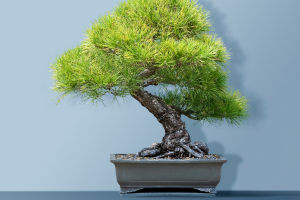Blue and white porcelain stands as a luminous jewel in the annals of Chinese ceramic history, and it represents a cherished legacy within the broader context of global ceramic culture.
Its distinctive aesthetic allure and historical significance render it not just a masterpiece of traditional Chinese craftsmanship but also a beacon of cultural exchange.
Across the globe, there exists an enduring passion for the appreciation and collection of blue and white porcelain. In this article, we shall delve into its rich historical tapestry, its intricate craftsmanship, and its pivotal role in cultural dialogues.
Historical Origins
The genesis of blue and white porcelain traces back to China's Song Dynasty (960-1279 AD), with its zenith unfolding during the Yuan, Ming, and Qing dynasties.
During the Yuan Dynasty, the craft of blue and white porcelain gradually matured, evolving into the quintessential expression of porcelain artistry by the Ming era.
Not confined to domestic acclaim, Ming blue and white porcelain traversed vast trade routes such as the Silk Road, disseminating its beauty to distant corners of the world.
The Qing Dynasty witnessed the apogee of blue and white porcelain's glory, as it emerged as a prized commodity in international trade.
Craftsmanship Characteristics
The allure of blue and white porcelain stems not solely from its distinctive cobalt-blue motifs but also from its exquisite craftsmanship.
Characterized by a delicate carcass and a glaze of pristine whiteness, blue and white porcelain employs mineral-based pigments fired at high temperatures, endowing it with unparalleled durability and colorfastness.
Its motifs, ranging from intricate floral patterns to pastoral scenes, epitomize the artistry of "blue and white," characterized by fluid lines and natural hues, thus constituting veritable masterpieces of aesthetic expression.
Cultural Exchange
Beyond being a testament to ancient Chinese ceramic artisanship, blue and white porcelain serves as a conduit for cultural exchange between China and civilizations worldwide.
Facilitated by maritime and overland trade routes, blue and white porcelain found its way to Southeast Asia, the Middle East, and Africa, serving as a bridge between Eastern and Western cultures.
Esteemed by nobility and merchants alike, blue and white porcelain captivated foreign collectors, disseminating not just China's porcelain-making prowess but also its aesthetic sensibilities and cultural essence, thereby profoundly influencing the evolution of global ceramic culture.
Contemporary Value
Even today, blue and white porcelain retains its allure as a highly coveted treasure in the global ceramic market. In China, it symbolizes not just traditional craftsmanship but also a vital aspect of cultural heritage.
Contemporary artisans continue to preserve and innovate upon the techniques of blue and white porcelain production, infusing it with renewed vigor and relevance. Its escalating value in international markets attests to its enduring appeal among collectors worldwide.
Conclusion
With its timeless aesthetic charm and rich historical heritage, blue and white porcelain stands as a testament to the ingenuity and artistry of traditional Chinese craftsmanship. Its pivotal role in fostering cultural exchange underscores its global significance.
As custodians of this invaluable cultural legacy, it behooves us to cherish, preserve, and perpetuate the legacy of blue and white porcelain, ensuring that its brilliance continues to illuminate the world's artistic panorama for generations to come.


